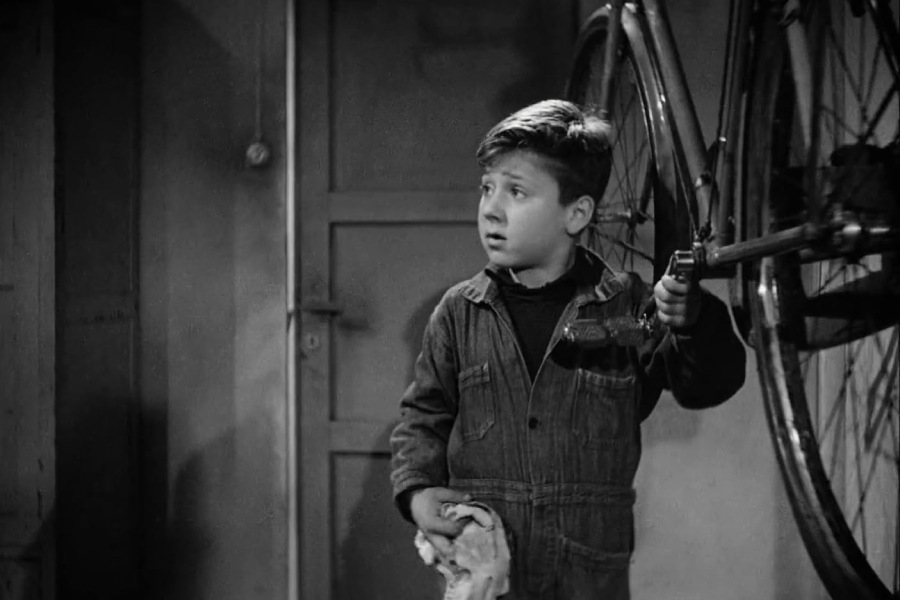Apu was Bengali cinema’s Bruno Ricci.
Enzo Staiola, then nine years old when Vittorio de Sica chose him to play Bruno Ricci in The Bicycle Thieves, passed away on Wednesday at the age of 85.
The Italian magazine Spettacolo.EU described Staiola as the last icon of Italian neo-realism.
The icon did not rest so much with Enzo as it did with the character that he played onscreen.
Enzo’s portrayal of Bruno Ricci in The Bicycle Thieves is one of the most endearing depictions of the innocence of childhood that ever appeared on-screen.
This is where Bruno and Apu came together.
There is little similarity between the storyline of De Sica’s The Bicycle Thieves and Satyajit Ray’s Pather Panchali.
Influence of the neo-realism style of filmmaking was profound on Ray in his first feature which came six years after The Bicycle Thieves was made.
If Apu and Durga carried the soul of Pather Panchali, Bruno’s bond with his father, whose bicycle gets stolen on the first day of a new job in post second-world war Rome, was the body and soul of The Bicycle Thieves.
Bruno accompanies his father Antonio in the pursuit of a stolen bicycle which is the family’s ticket to the next meal.
Life in war-ravaged and post-Mussolini Italy was rough. De Sica gave the lives of the working class people a dignity through his two main characters, that of the father and son. Neither Enzo nor Lamberto Maggiorani (Antonio Ricci) were professional actors.
Enzo literally walked into the film, when De Sica spotted him in a crowd while shooting. De Sica was so impressed by Anzo’s walk that he hired him on the spot to play Bruno Ricci.
The Bicycle Thieves was not an influence only on Ray, whose films much like the Italian neo-realist films, were a departure from the conventional films of the 1950s produced in Bengali language.
In Majid Majidi’s Children of Heaven, made in 1997, which follows a child’s search for his sister’s lost shoes, the father picks up the boy onto the bicycle and pedals to an affluent locality in search of work. Separated by time, the search for meaning in everyday life in an increasingly harsh world remains constant.
Enzo did a few more films including Joseph L Mankeiwicz’s The Barefoot Contessa alongside Humphrey Bogart and Ava Gardner. His last appearance was in an uncredited role in Italian Giallo, The Girl in the Yellow Pyjamas (also known as the Pyjama Girl Case), in 1977.
And he walked away from the silver screen to teach mathematics all his life and served as a clerk at the land registry in Rome, till he retired.
Enzo described his days as Bruno Ricci as an exceptional period in a very normal life.
“Becoming a professional actor? I’ll tell you the truth, no. In the end it was a real pain in the ***. As a child I could never play with my friends because if I made a mark on my face I couldn’t make films any more. Then it was also a bit boring, the times of cinema are very long. I’m not a myth, let’s say that in a very normal life there was an exceptional period,” Enzo had told La Republicca, an Italian newspaper.
Enzo was not a myth. Neither was Bruno. They will remain etched in celluloid history.











